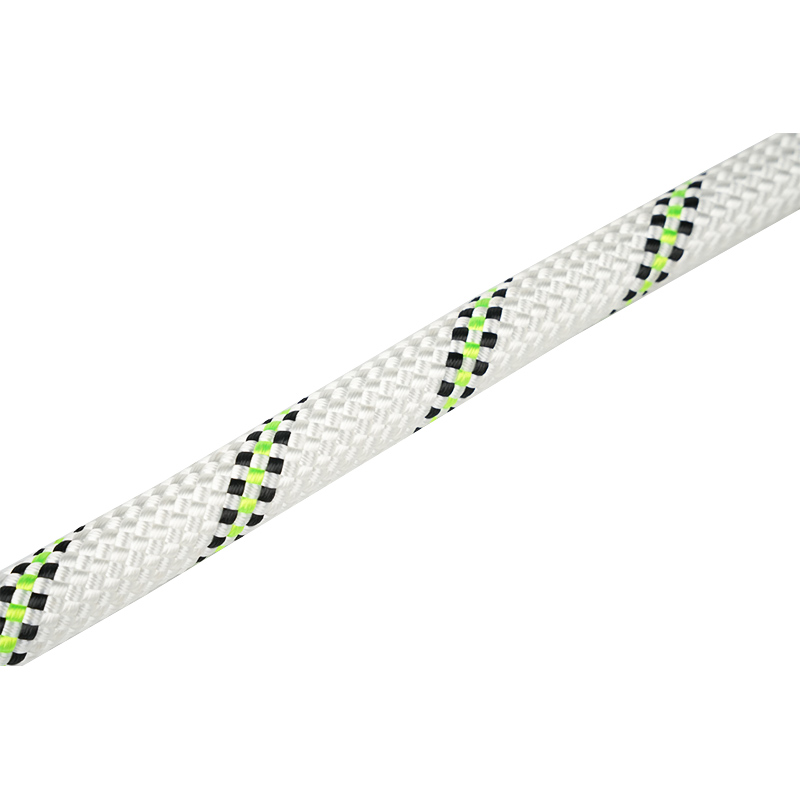When it comes to choosing a safety rope for industrial use, many buyers initially focus on strength ratings and compliance labels—but an equally critical factor that often gets overlooked is the relationship between rope diameter and its internal construction. These two features don't just influence how a rope feels in the hand; they significantly impact its tensile performance, durability, flexibility, and ultimately, its ability to protect workers in high-risk environments. As a professional manufacturer and supplier of safety ropes, we've seen firsthand how the wrong rope configuration can lead to reduced operational efficiency or, worse, compromised safety.
Safety ropes typically range from 10mm to 16mm in diameter, and this variation is far more than cosmetic. Thinner ropes, such as those closer to 10mm, are generally favored for lightweight, short-duration tasks or applications where gear compatibility demands a slimmer profile. However, as the diameter increases, so does the rope’s strength and resistance to abrasion. Thicker ropes offer a larger surface area, which reduces internal wear during repeated loading and provides better grip for workers wearing gloves. The key is finding a balance that fits the specific task while meeting the required performance criteria.

Equally important is the construction method used to manufacture the safety rope. Most high-quality ropes in industrial safety applications are built using kernmantle construction—a design that features a load-bearing core (kern) protected by a braided sheath (mantle). This layered structure offers both strength and flexibility, making it ideal for use in vertical or platform-based operations. In contrast, simpler braided ropes may appear similar at first glance but lack the internal support needed for high-stress environments. It’s this kind of technical distinction that can define the difference between a compliant product and a genuinely reliable safety solution.
Another key consideration is how rope construction affects handling. A well-designed safety rope should not only meet strength standards but also perform comfortably in real-world use. A rope that's too stiff due to an overly thick core might be harder to manipulate, while an overly flexible rope may tangle or flatten under load. This is especially crucial in time-sensitive tasks, such as live line work or rescue operations, where every second counts and equipment must respond predictably. As experienced exporters in this industry, we ensure that our ropes go through thorough usability testing, not just lab certification.
Endurance is also closely tied to diameter and structure. Ropes with a denser sheath layer typically show better resistance to environmental stressors like UV exposure, dust, and sharp edges. When combined with advanced materials like ultra-high molecular weight polyethylene or Kevlar, these design choices result in ropes that can maintain their integrity under repeated use, especially in outdoor or chemical-heavy settings. And because we know that downtime affects your bottom line, we build our safety ropes with longevity in mind to keep your workforce protected and your operations running smoothly.
Buyers often ask if a thicker rope automatically means better safety. The answer depends on context. A 16mm rope may offer excellent strength and wear resistance but could be overkill—or even impractical—for tight access work where weight and flexibility are priorities. That's why we emphasize application-specific selection. Whether you're in construction, utilities, or energy, choosing the right safety rope isn't just about meeting a number—it's about choosing the right tool for the job. And as your trusted safety rope supplier, we’re here to help you make that call with confidence.
In the end, understanding the technical relationship between rope diameter and construction gives you a much clearer picture of how to match products to your safety needs. It's this kind of in-depth selection process that prevents injuries, ensures compliance, and builds long-term value. If you're looking for dependable safety ropes built with real industry knowledge behind them, we’re always ready to support your next project with professional guidance and proven manufacturing quality.